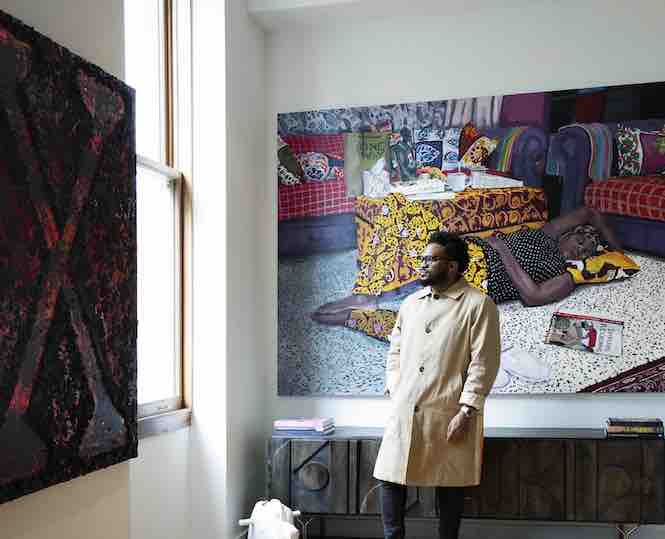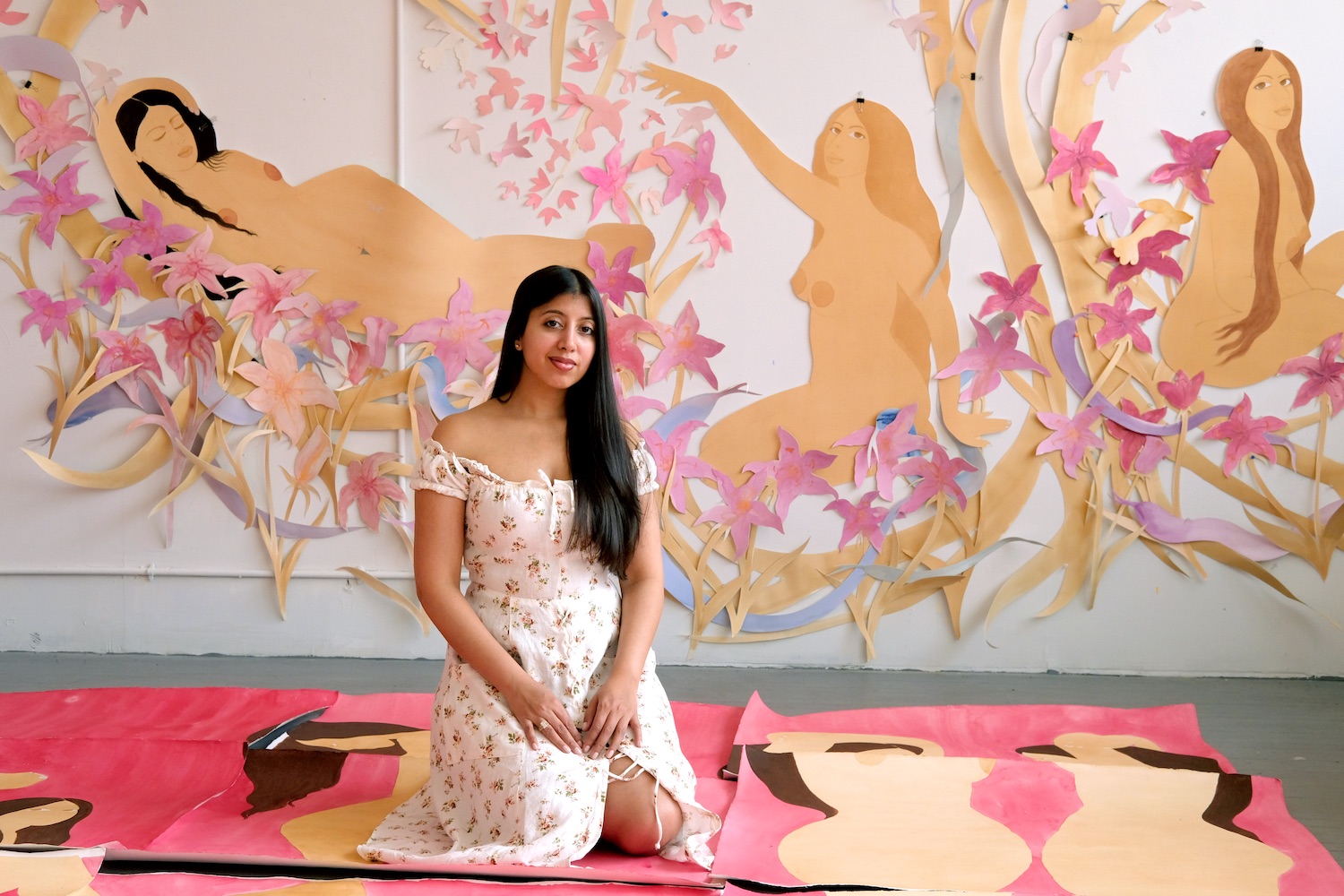Everette Taylor, the CMO of Artsy since 2019, has been collecting art for almost four years. After winning a work by Jon Hen in a raffle, he hung it on his walls and realized just how bare they were. In an effort to fill that void, he began to understand the very real impact of supporting emerging artists, trusting his eye, and maintaining a level of accountability.
The entrepreneur founded ET Enterprises in 2013 and has been named as a Forbes 30 under 30. His entry into the art world, and story of collecting, perfectly aligns with Artsy’s vision of a more transparent, decentralized, democratic art market, where anyone who wants to buy and support art can do so easily, with the click of a button.
Whitewall spoke with Taylor—who recently acquired work by artists Rick Lowe and Ryan Cosbert—about the future of buying art digitally.
WHITEWALL: You acquired the first work of art in 2017 in a raffle, a work by Jon Hen. Where does it hang now?
EVERETTE TAYLOR: The work is called Red Whispering, with mixed media, acrylic, spray paint, and pastels on canvas. The work is oddly shaped, which makes it very unique. It hangs in the hallway as you enter into my home, always a nice reminder of how everything started.
The work reminds me of my relationship with my mother. When you look at the figuration within the piece, you can see a visible mouth and hand as if someone is whispering. As a kid, we didn’t have much, but my mom would take me to the movies, and I remember whispering to her throughout the movie. The work reminds me of simpler times.
From the onset, I only bought art that I had a personal connection to, and it quickly became something I was super passionate about. Also, there’s something beautiful about being able to directly support creatives and artists. I find them incredibly brave and nonconforming.
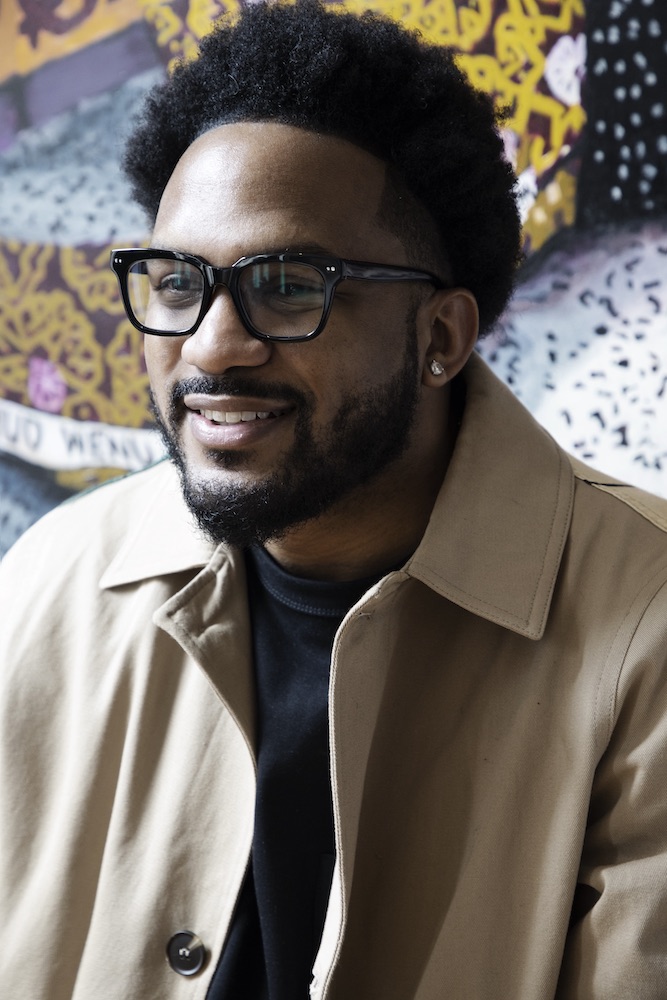
Everette Taylor in Rome Pays Off x Jean-Michel Basquiat “Anthony Clarke” Unisex Trench Coat, photo by Steve Benisty. In the background: Wangari Mathenge, “The Ascendants VI (Imperial Reckoning)” (2020).
WW: How has your collection evolved since then? You’ve said that you wanted to collect work from artists that meant something to you. How so?
ET: When I first started, I had no idea or knowledge about the “fine art world.” I was just buying with my eyes and heart. I still do, but I’ve become a lot more knowledgeable about the art world and my taste has changed. For example, I was buying strictly figurative artwork in the beginning, and I have leaned a lot more toward abstraction later in my collecting. But it’s been almost four years—I’m still learning and evolving.
However, a few things have stayed the same. I trust my own eye and taste first, and don’t pay attention to market hype. It has guided me well in collecting, finding many artists before they gained commercial success.
Next is that I only buy art that has meaning to me. If I took you through my collection, every work has an anecdote to them that connects to who I am as a person.
Lastly, I want to buy art from genuinely good people. I try to make it a point to connect personally with anyone I purchase art from. There’s so much art out there, you have to hold yourself to some level of accountability and parameters. I’ve built a beautiful community of friends through collecting.
WW: How have you seen the direct impact you can have in supporting an artist as a patron?
ET: I believe that supporting emerging artists is one of the best things you can do. You’re buying a work can be the difference between them being able to pay for rent that month or putting food on their family’s table.
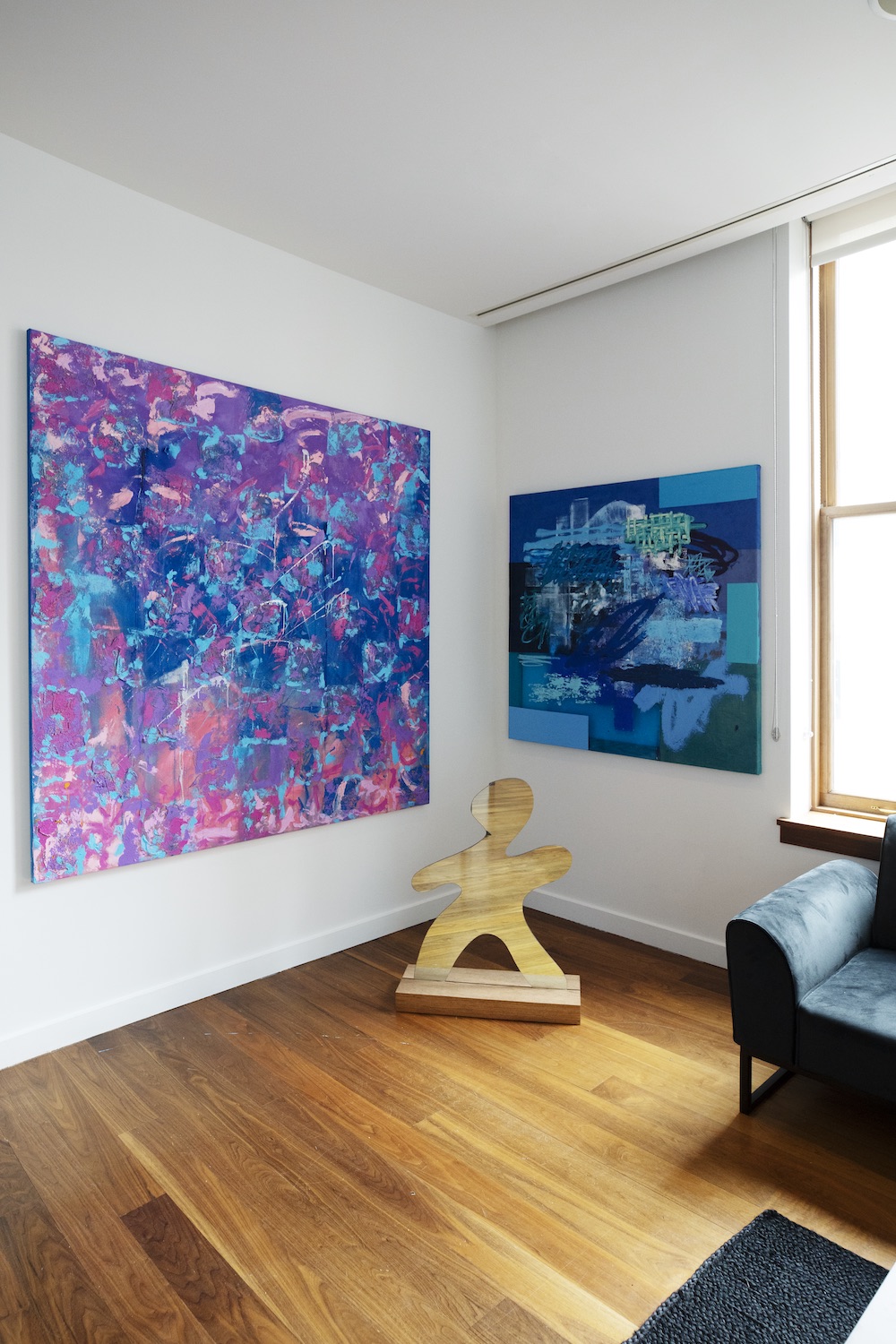
From Left to Right: Ryan Cosbert, “Mysticism” (2021); Aria Dean, “(meta)model: after flat stanley” (2019); Patrick Alston, “Mathematics” (2020). Photo by Steve Benisty.
WW: Of your role at Artsy, you’ve said, “We are doing something that’s changing a space that needs so much innovation, needs so much change, that’s not completely equitable yet.” What kind of change and innovation are you focused on at the moment at Artsy?
ET: I often think about how intimidating and confusing entering the art world can be or how frustrating it can be, even as an established collector to experience transparency and accessibility within the art world. There’s just a ton of friction for something that should be simple, from access to data/insights that’s usually held by art world insiders and paywalls to seamless transactions that are typically tedious.
If you want to buy art, you should be able to do so. It shouldn’t matter your background or whatever art politics there may be.
WW: How has the past year accelerated that change?
ET: We’ve made tons of progress on the Artsy goal to make it easier than ever to buy art online seamlessly. From making auction results free and available to everyone to our “Buy Now, Make Offer” feature making it easier than ever to buy art online, and allowing people to sell their art and avoid many of the fees typical with selling your art, we are making real foundational changes in how people interact with the art world. The proof is in the numbers—instead of slowing down during the pandemic, more people are buying art online than ever.
We also have a duty to help people discover a wide range of artists from different backgrounds, not just blue-chip artists or white male artists. We want to provide exposure to artists working in different mediums, from paintings to digital, and to make sure we spotlight underrepresented artists in our content and our algorithms in the Artsy marketplace.
WW: What kind of influence do you hope Artsy can have on the larger art market?
ET: Creating a truly transparent and accessible space where not only mega galleries can thrive, but also small galleries. Where not only blue-chip artists can make a living from art, but artists all over the world globally. To expand the art market and inspire more people to collect art and support artists. I always say that I want to see everyone win. I believe Artsy can help make that a reality.
WW: Do you see the change in the way we buy art, as a result of the past year, as a trend that will continue to grow?
ET: Absolutely. The online art market will continue to grow at a rapid pace. The art world is embracing technology and the online space. Collectors want to be able to be able to easily buy art without friction. The online space is welcoming new digitally savvy collectors, and the ball is rolling and will not stop.
WW: You’ve said you’d like to open a museum in Richmond, Virginia, where young people can see the possibility of creativity and art as their own future. What kind of impact do you think that kind of space could have had on you as a young person?
ET: You know, when I was a kid, I was really into the arts, from music to visual art. I didn’t really have access to visual art; our school didn’t even take trips to VMFA. And even if we did, I wouldn’t have had the connection to the art the way I would if it had been Black artists.
I believe if I had access to a space like the one I hope to build, I would have had more confidence to explore my interests in the arts and creativity. More than myself, though, I would have loved to see how it would have influenced some of my peers who were so artistically talented but never knew there were successful artists that looked like them or that there was a professional path to being an artist.
I think about the first time I saw works from Stanley Whitney, Julie Mehretu, Sam Gilliam, et cetera, and I couldn’t believe these were Black artists. I can’t imagine the impact that can have on others like myself.
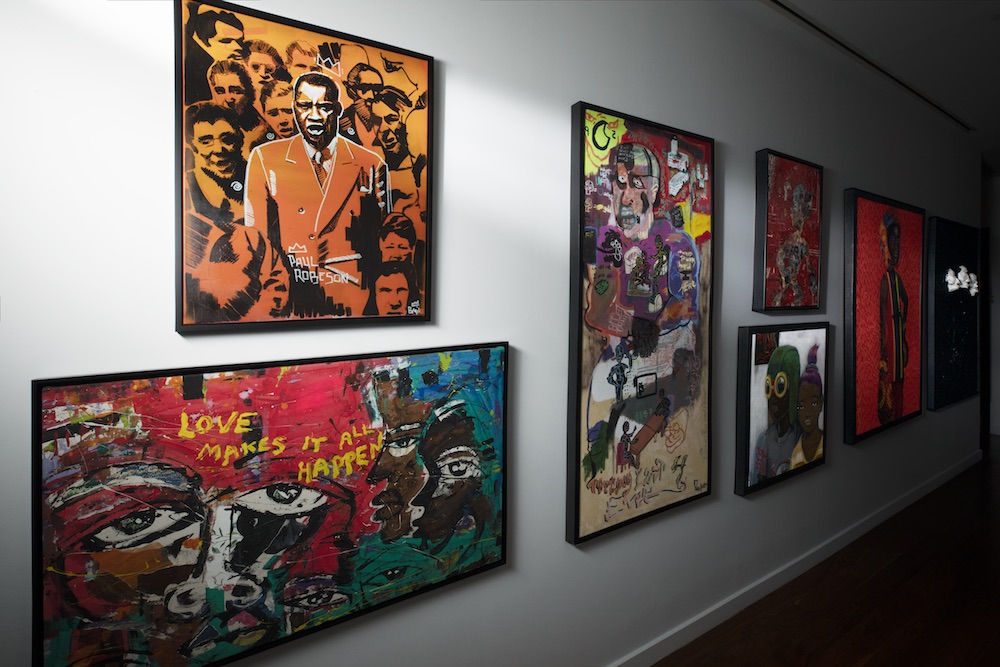
From Left to Right: Brandan “Bmike” Odums, Paul Robeson (2016); Miles Regis, “Love Makes It All Happen” (2017); Jon Hen, “9 to 5” (2017); Penda Diakité, “Esu” (2018); Hebru Brantley, “Bottom Floor” (2017); Solomon Adufah, “Black Star” (2018); Noah Humes, “We’re Going Home” (2019). Photo by Steve Benisty.


